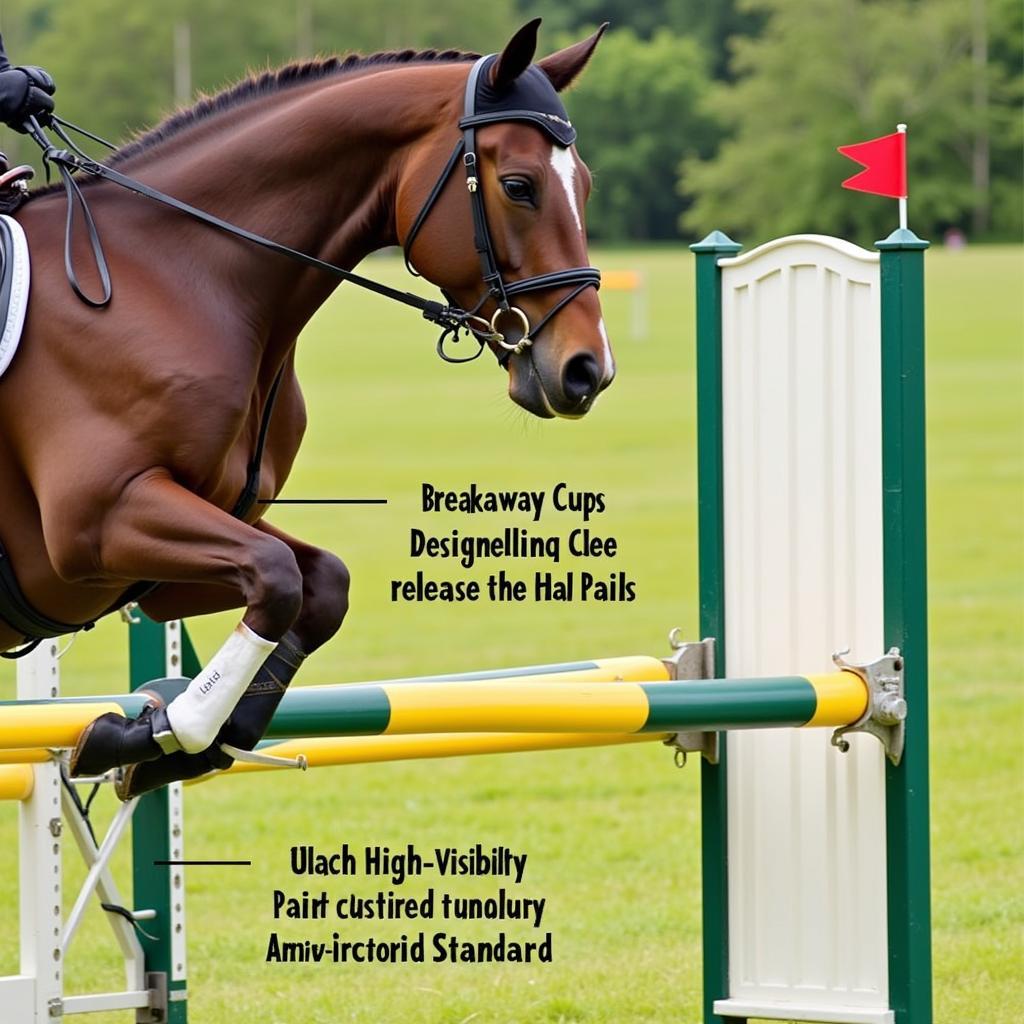Building your own horse jump is a rewarding experience that allows for customization and can save money in the long run. Whether you’re a seasoned equestrian or a beginner just starting out, this guide will provide you with all the information you need to build a safe and sturdy horse jump. From choosing the right materials to understanding the importance of proper dimensions, let’s dive into the world of DIY horse jump construction!
Planning Your Horse Jump
Before you start gathering materials, it’s essential to plan your horse jump carefully. This includes:
Determining the Type of Jump
There are numerous types of horse jumps, each serving a different purpose and skill level. Some common types include:
- Cross Rails: Ideal for beginners, consisting of two poles placed horizontally at different heights.
- Vertical Jumps: A single pole placed horizontally, encouraging the horse to jump straight up.
- Oxers: Wider jumps made up of two sets of poles with varying heights and widths.
- Water Jumps: A tray of water placed under a pole or set of poles, requiring the horse to clear both the height and width.
Choosing the Right Materials
The materials you choose will affect the durability, safety, and longevity of your horse jump. Opt for sturdy and weather-resistant materials such as:
- Treated Lumber: Pressure-treated lumber is a popular choice for jump standards (the upright supports) due to its resistance to rot and decay.
- PVC Piping: Lightweight and durable, PVC pipes are an excellent option for jump rails, especially for beginners.
- Jump Cups: These are essential for holding the rails securely in place and come in various materials like metal or plastic.
Considering Safety First
Safety should be your top priority when building a horse jump. Here are some crucial safety considerations:
- Stability: Ensure the jump is stable and won’t topple over easily, even with a horse’s weight against it.
- Breakaway Rails: Use cups that allow rails to fall if knocked, minimizing the risk of injury to the horse or rider.
- Visibility: Paint the jump with bright, contrasting colors to enhance visibility for the horse.
 Essential Safety Features for Horse Jumps
Essential Safety Features for Horse Jumps
Building a Basic Horse Jump: Step-by-Step Guide
Now that you have a plan in place, let’s move on to building a basic horse jump:
-
Cut the Lumber: Cut the treated lumber into four equal lengths for the standards. The height of the standards will determine the height of your jump.
-
Assemble the Standards: Create two “X” shapes by attaching two standards together at their midpoint using screws or bolts. Ensure the “X” shapes are stable and can stand upright.
-
Attach the Jump Cups: Securely attach jump cups to the top portion of each standard. The placement of the cups will determine the width of the jump.
-
Insert the Rails: Place the PVC pipes or wooden rails into the jump cups. Ensure the rails are level and secure.
-
Test for Stability: Before allowing your horse to jump, thoroughly test the jump’s stability by applying pressure to different points. Make any necessary adjustments.
Additional Tips and Considerations
-
Start Low and Gradually Increase Height: When introducing your horse to a new jump, start with a low height and gradually increase it as the horse gains confidence.
-
Use Fill Material for Oxers: When building oxers, use lightweight fill material like hay bales or plastic blocks to create the width and shape of the jump.
-
Regular Maintenance: Regularly inspect your horse jump for any signs of wear and tear. Tighten loose screws, replace damaged rails, and repaint faded colors to ensure ongoing safety.
Conclusion
Building a horse jump is a fulfilling project that allows you to create a customized training tool for your equine partner. By following the steps outlined in this guide and prioritizing safety, you can construct a durable and functional jump that will enhance your horse’s skills and provide hours of enjoyment. Remember to start with basic jumps and gradually progress to more challenging obstacles as both you and your horse gain experience.
Don’t forget to check out our other informative articles on horse care and equestrian sports: clean horse, creative horse jumps, and games for horseback riding lessons.
For further assistance, feel free to contact us at 0902476650, email us at [email protected], or visit us at 139 Đ. Võ Văn Kiệt, Hoà Long, Bà Rịa, Bà Rịa – Vũng Tàu, Việt Nam. We have a dedicated customer support team available 24/7.





